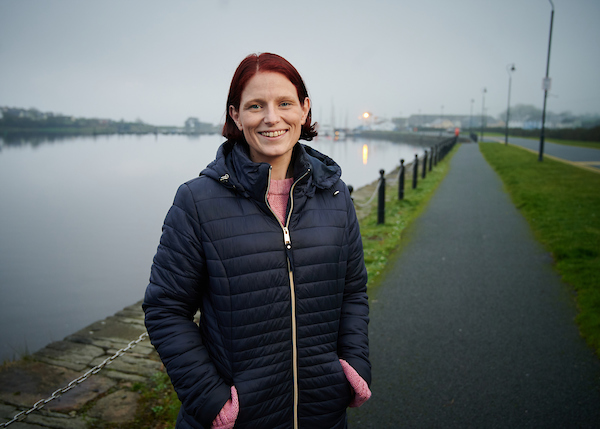FLOOD-hit residents in South-East Clare are “living in hell” and are “living in fear” of more flooding, a local Dáil deputy has claimed.
The devastation caused to several households and farmlands in Springfield, Clonlara was highlighted in the Dáil this week by Deputy Violet-Anne Wynne when she presented a case for the establishment of one single body to manage the River Shannon.
Commenting on the River Shannon Management Agency Bill, Deputy Wynne warned flooding is becoming too regular and must be tackled with timely action rather than “more kicking the can further down the road”.
Last February, she recalled several households and farmlands were destroyed or severely impacted due to flooding in South-East Clare.
“One man in Clonlara was quoted as saying “I am living in hell”. For him it has become a very common life event. While many people have commented on the ways we can tackle flooding along the River Shannon, I believe that one of the most glaringly obvious issues facing us is the lack of a river management agency for the river.
“Each time we hear of flooding we hear how blame should be apportioned across Waterways Ireland, the OPW, the local authorities and the ESB – the list goes on and on. That is where the problem lies. No one is truly accountable or responsible.
“The River Shannon is Ireland’s longest river. It passes through 11 counties, which means 11 different local authorities have responsibilities. There are 20 agencies in total, some of which I mentioned already, with responsibilities with regard to the river. Does this make sense?
“All of them are trying to work towards a common goal but are working independently of each other. All the agencies request funding but not all are quite sure what the end goal is. We need a River Shannon Management Agency within the Office of Public Works.
“We need to ensure we have a collective of the right people from across the relevant State bodies to properly implement a strategy for the River Shannon,” she said.
She expressed concern about the lack of public representation on the Shannon flood risk State agency co-ordination working group and the lack of engagement with local people who are directly affected by flooding.
She asked if this group has a winter plan for 2020 as people in flood-hit areas are “living in fear” as they are not sure when a heavy rainfall will lead to the next flood, whether they will be able to get to work the following morning if the roads are flooded.
“These residents cannot insure their homes as they are considered at risk. Can the Minister of State imagine being in that situation and not being able to get home insurance because of something that is completely outside his control? These people are facing the winter knowing there is a great chance that they and their families will spend weeks on end separated into different hotel rooms, stripped of any autonomy to even make a meal for themselves or their children.
“These families are traumatised by the experience of flooding and the ordeal and the stress they have had to endure,” she stated.
Over the coming months, Minister O’Donovan pledged to examine the complexities and legal issues arising from the River Shannon Management Bill in the context of the creation of a single agency.
The West Limerick Deputy said he is well aware of the devastation that can be caused by flooding for individual homeowners, businesses, landowners and communities, having visited areas including Kilmallock, Kenmare, Clifden, Bantry, Bandon, Dunmanway and Cork city, which have been affected by recent storms and flooding.
“The Government has completed an assessment of the flood risk along the Shannon, published the flood maps and is implementing the plan to manage the flood risk along the Shannon river.
“One of the six catchment flood risk assessment and management, CFRAM, study areas included a dedicated study of the flood risk of the Shannon river basin district. This Shannon study has a catchment area of 17,800 sq. km and a population of some 670,000 people living in 17 local authority areas.
“It assessed, mapped and provided the flood risk management plans for the Shannon including for 67 communities. To date, 11 of these towns have a flood relief scheme providing protection against a one in 100-year flood event.”
In May 2018, the Government announced 34 new flood relief schemes for Shannon river communities, which are part of the Government’s €1 billion investment in flood relief measures over the lifetime of the National Development Plan 2018-2027. Work on 25 schemes is currently under way.
East Clare correspondent, Dan Danaher is a journalism graduate of Rathmines and UL. He has won numerous awards for special investigations on health, justice, environment, and reports on news, agriculture, disability, mental health and community.


